the Functions of Color Light Therapy
Posted by GEGARY
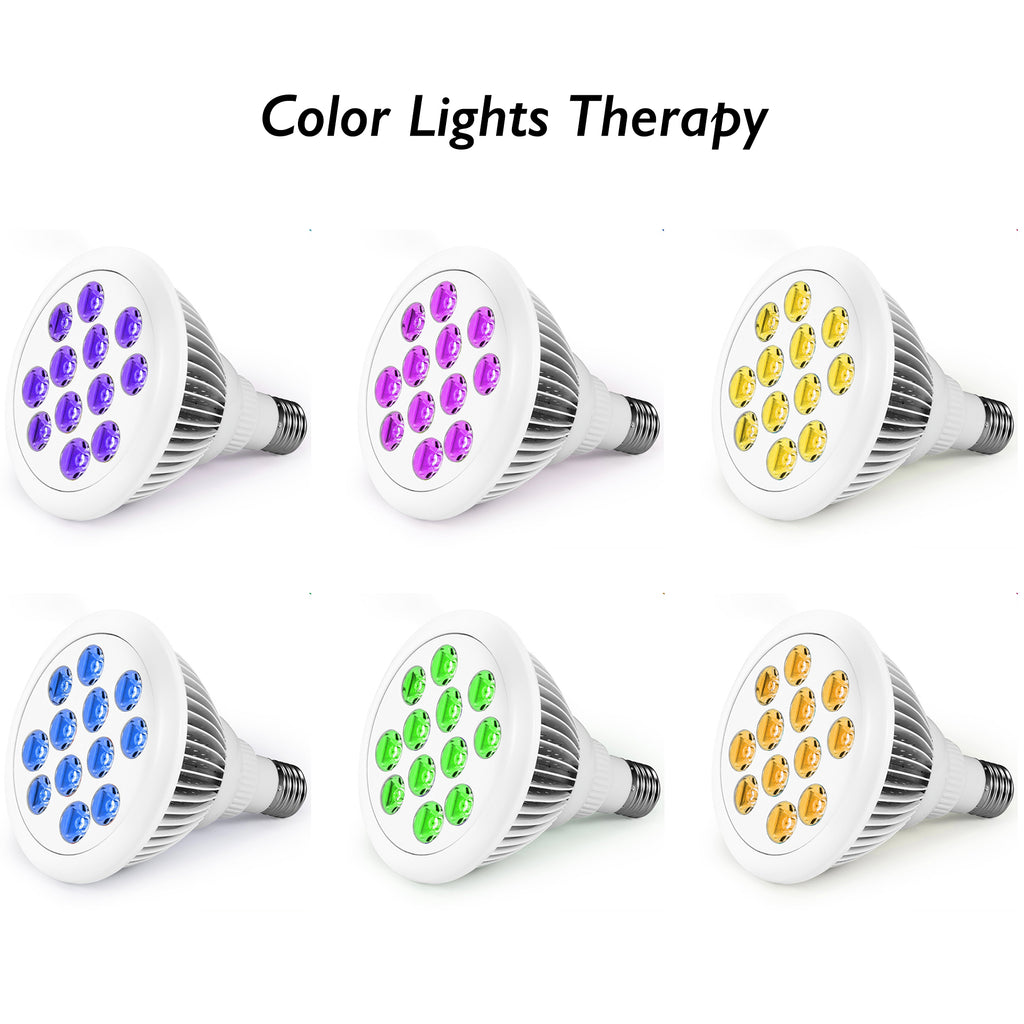
Color Light Therapy, also known as chromotherapy, uses the visible light spectrum (i.e., the colors you see in a rainbow) to promote healing.
First made mainstream by NASA’s medical application of red light, this type of treatment has been steadily growing in popularity in recent years.
That said, color light therapy actually has a long history. Ancient healers across many different cultures understood that light (and color) could have powerful healing effects. As imbalances occur in our bodies, our cells can benefit from exposure to specific colors – helping them regain optimal function.
According to chromotherapists, the human body is composed of colors, and these colors are responsible for the functioning of various bodily systems.
In some disciplines, such as chakra healing, the organs and limbs have their own distinct colors. Color can assist with emotional releases and is very useful in relieving stress and anxiety.
Red – Activates and revitalizes
Orange – Restores and animates
Yellow – Fortifies and brightens
Green – Balances and relaxes
Blue – Soothes and calms
Indigo – Purifies and focuses
Violet – Inspires and supports
Medical applications of chromotherapy
While ancient healers and mystics were some of the first to use chakra colors to restore balance to the body, modern-day science is finally catching up.
Various forms of light therapy are now widely used in fields such as dermatology, pain management, mental health, joint & muscular issues, and more.
On the technical side, light travels at different wavelengths. Red is at the top of the spectrum, traveling at around 630 nm and above, while violet is at the bottom, starting at around 380 nm.
Depending on its wavelength, light produces different effects on the body. That’s why light therapy is often categorized by either color or wavelength.
Below we’ll look at the different forms of light therapy and which conditions they can treat.
1. Near-Infrared Light Therapy
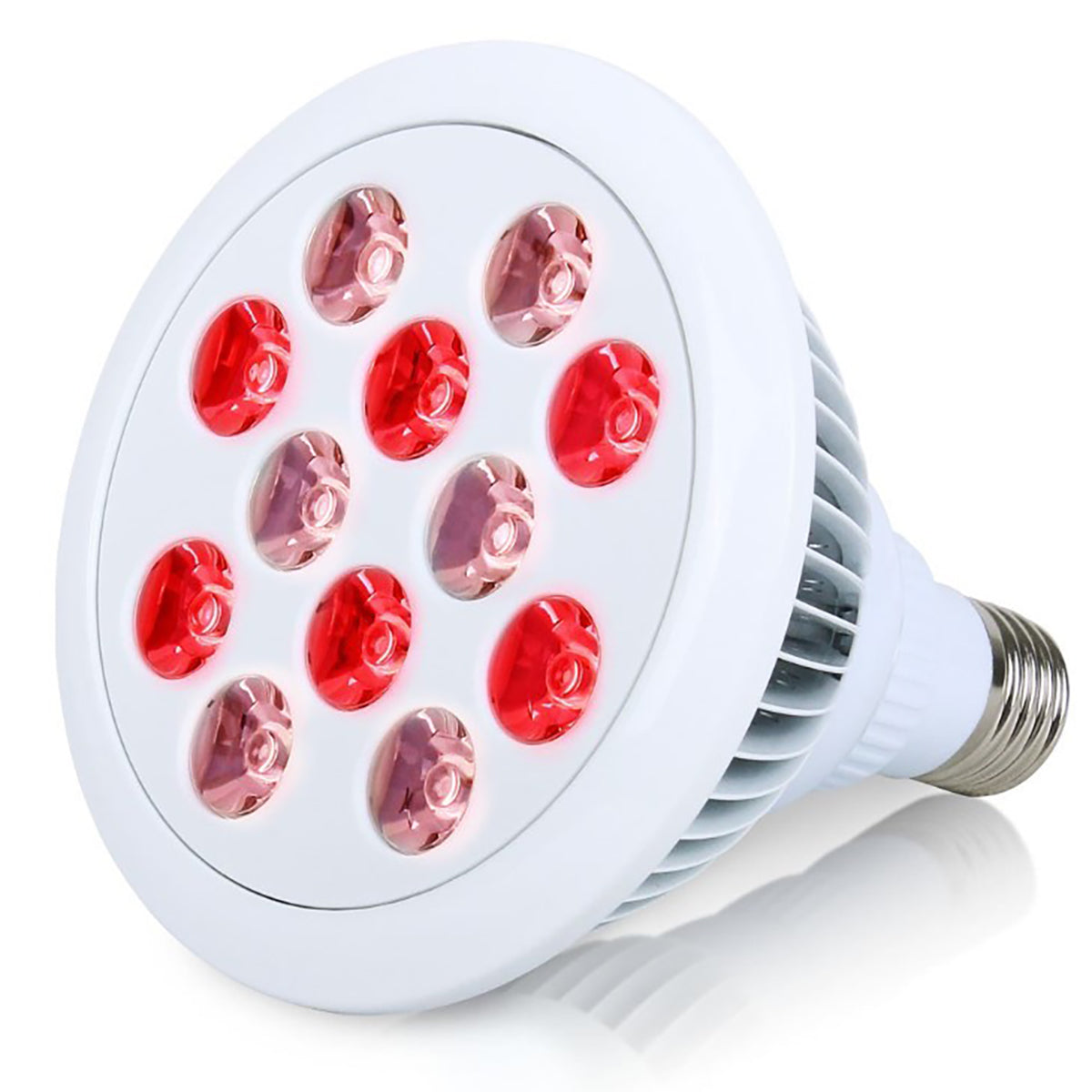
Near-Infrared Light Therapy (NIR) generally involves light on a wavelength of 700 nm-1mm. This light is not visible, but the body definitely feels the effects.
The healing effects of near-infrared light only became known with the release of the LED technology. In some medical devices and treatments, NIR LEDs are often used in conjunction with red LEDs.
The benefits of Near Infrared Light Therapy
The major uses for the near-infrared type of chromotherapy are wound healing and cell repair.
NIR can be used to treat:
How? NIR has a profound effect on the body. This type of light boosts enzyme activity to stimulate metabolism and also stimulates mitochondrial function to boost ATP (our energy source for all body processes).
It also increases DNA synthesis for cellular reproduction and helps repair damaged cells.
2. Red Light Therapy (620-750 nm)
Red is considered a hot color and has a stimulating effect, both physically and mentally. It is associated with power, energy, and vitality. Red is essential for physical and emotional transformation.
Red light restores depleted energy and nourishes adrenal functions. In addition, it helps combat lethargy and congestion.
Red light therapy stimulates circulation as well as the muscular and cardiovascular systems.
The benefits of Red Light Therapy
Red light therapy treatment can help with:
Much like NIR, red light acts within the cells, stimulating that all-important ATP and increasing RNA/DNA synthesis for cellular reproduction and repairing damaged cells.
Red light is used to help treat:
Despite all the positive progress, red light therapy is not suitable for everyone. This type of treatment should be avoided if you have a fever, hypertension, or nerve inflammation. It should also not be used on open wounds or for patients with mental health issues.
3. Orange Light Therapy (590-620 nm)
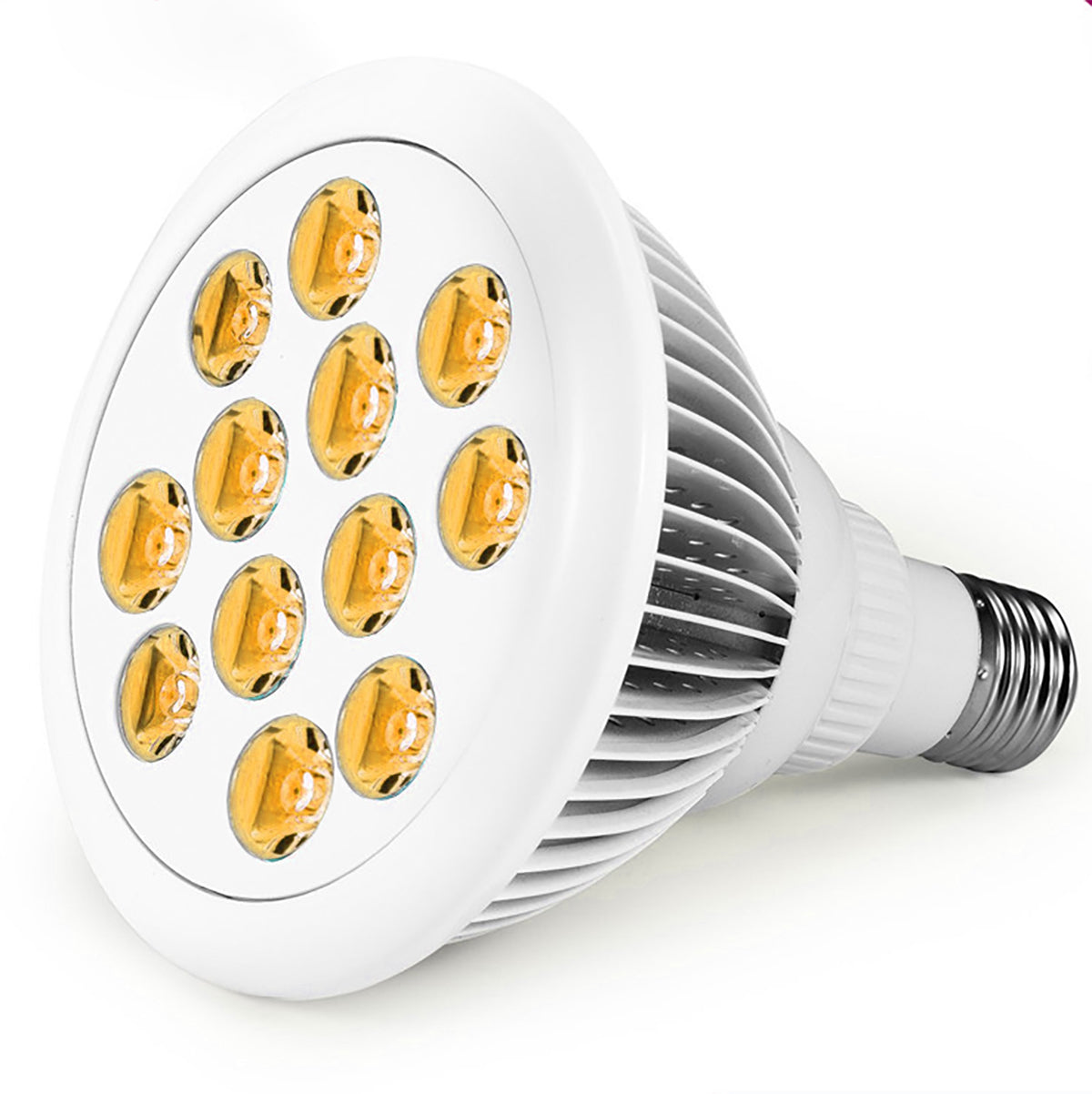
Orange is the color of joy and happiness and can enhance both mental and physical energy.
A warming color, orange is used to help balance problems with the kidneys, the large and small intestines, the lower spine, and sacroiliac joints.
Orange can also relieve nervous tension, arthritis, fear, and loss of appetite (especially when related to depression).
There is some evidence that exposure to orange light for a brief period in the morning will help overcome feelings of lethargy.
The benefits of Orange Light Therapy
Exposing the body to orange light can have the following effects:
Orange light can be used to help treat:
Orange light should be avoided if you are experiencing any type of anxiety disorder.
4. Yellow Light Therapy (570-590 nm)
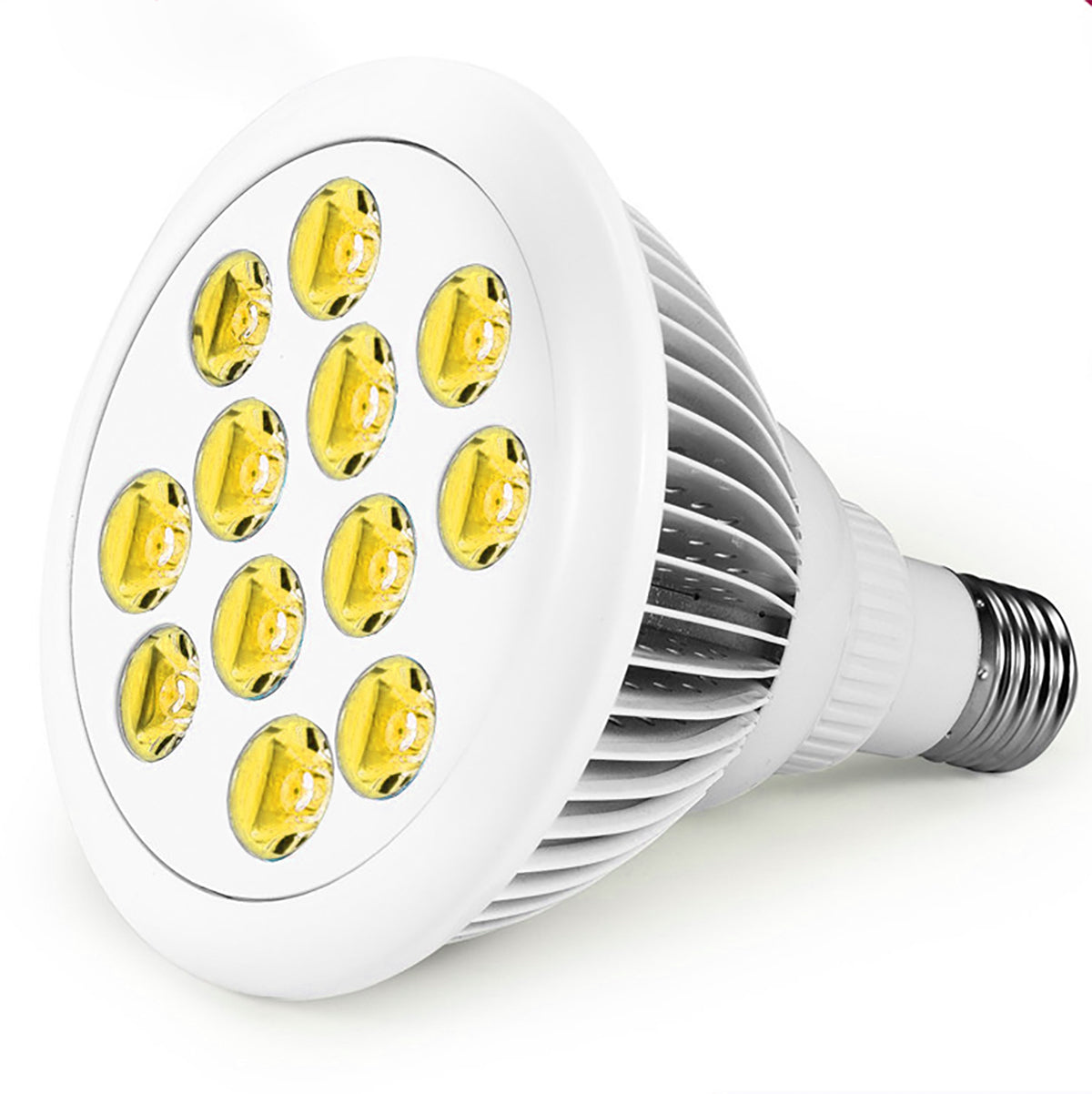
Due to its association with the sun, yellow is considered a bright and cheerful color.
It’s associated with the Solar Plexus, thus being beneficial in balancing the digestive system – the liver, gallbladder, pancreas, spleen, and stomach.
Yellow is also associated with the adrenal glands, nervous system, and muscles. In addition, it activates the lymphatic and immune systems. It is used to heal arthritis and stimulate eye and ear functions.
It can also be used to strengthen the nervous system and assist metabolism.
The benefits of Yellow Light Therapy
Use yellow light to:
Yellow light is used to help treat:
Avoid yellow light if you’re suffering from diarrhea, fever, heart palpitations, neuralgia, or extreme stress.
5. Green Light Therapy (495-570 nm)

Green is a balancing color. It has a sedating and cooling effect, which helps reduce the swelling and inflammation of joints and tissues while calming the body.
This color influences the heart, breasts, lungs, upper back, endocrine (chemical messenger), and circulatory systems. Green-argon lasers are often used for delicate diabetic eye surgery because green light tends only to affect the blood vessels, leaving other sensitive portions of the eye undamaged.
The benefits of Green Light Therapy
Green light can:
Green light is used to treat:
6. Blue Light Therapy (450-495 nm)
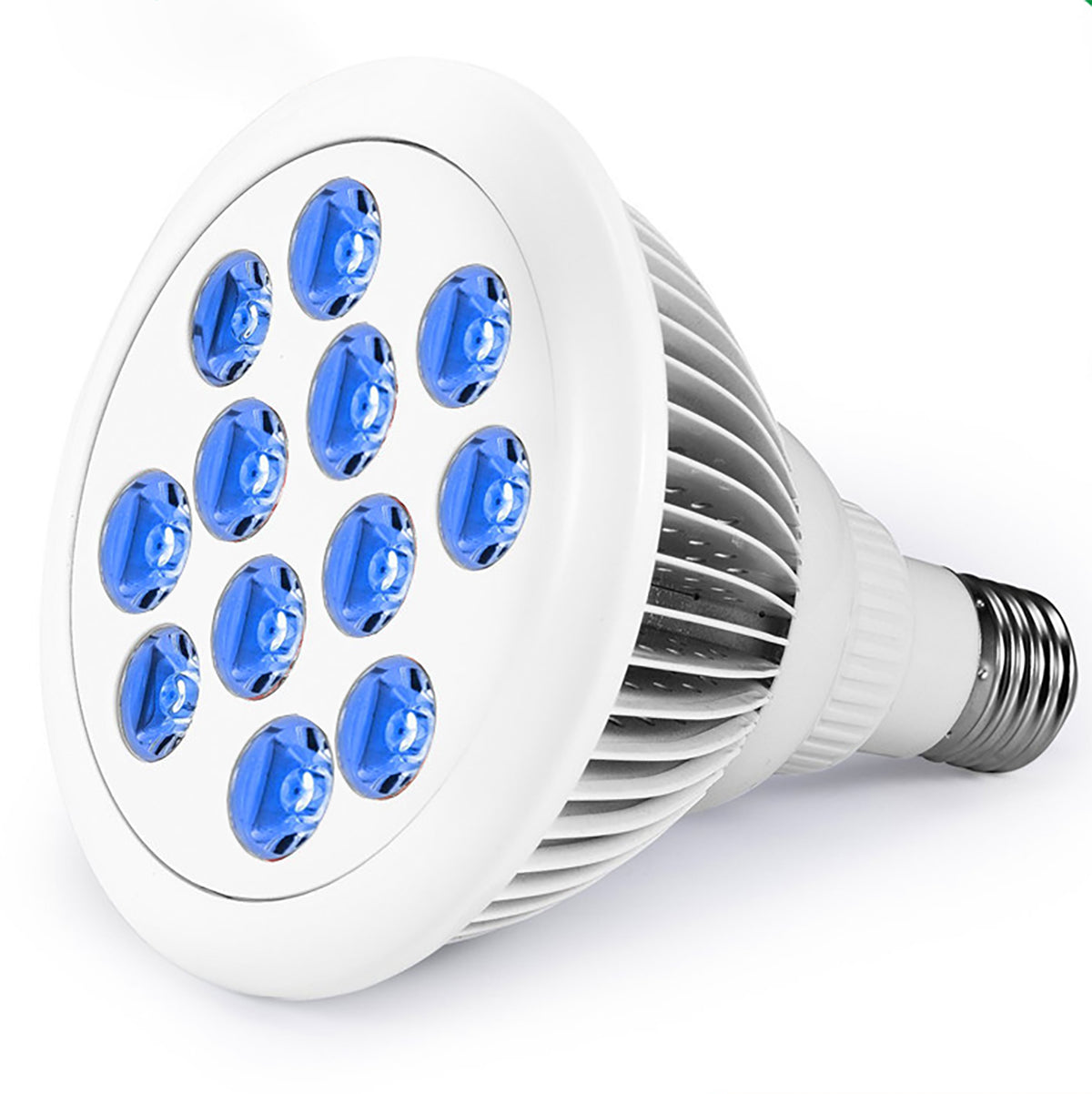
Blue is a cool color and has a relaxing effect on the mind and body. Blue light therapy is often used to help boost morning energy levels as the wavelengths help set circadian rhythms.
Blue is optimally suited to soothe the throat and helps with imbalances in the thyroid and parathyroid glands. It also helps with neck and shoulder tension as well as problems with the teeth and gums.
In color therapy, Sky Blue is used for bronchial issues. Sky blue is a calming color that facilitates the breaking down of emotional barriers. It aids in sleep and relaxation, soothes skin irritations, and relieves itching and pain.
The benefits of Blue Light Therapy
Blue light has antiseptic and antibacterial properties, so this provides an option for those who cannot tolerate prescription antibiotics.
It is also used for burns to speed healing, cool, and soothe.
Blue light:
Blue light is used to treat:
Do not use blue light if predisposed to macular degeneration, if you are experiencing cold symptoms, or if you have high blood pressure.
7. Indigo Light Therapy (420-450 nm)
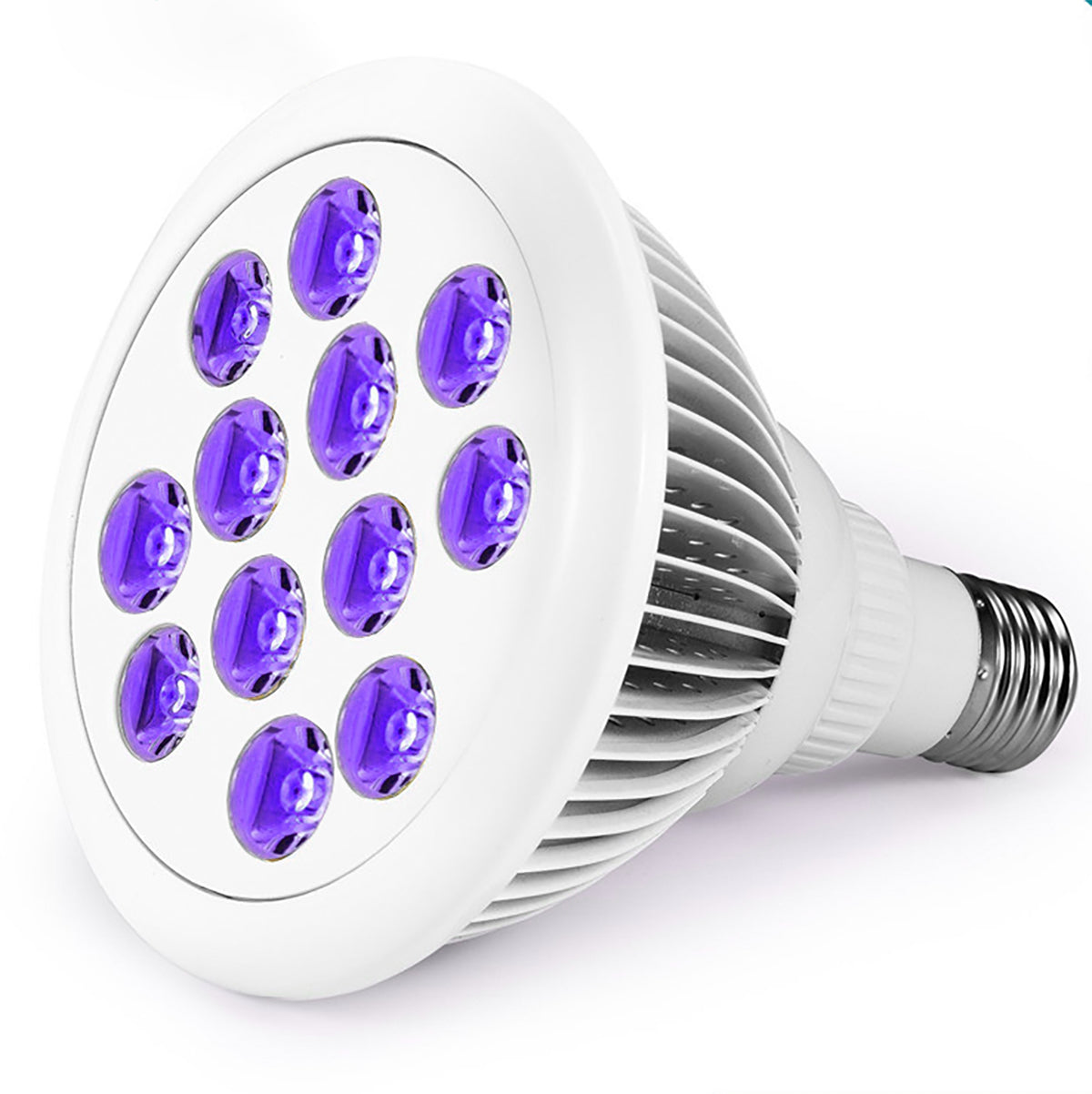
Indigo is a colder color that is used in all conditions involving an excess of heat. Peaceful and calming, it has a relaxing effect on the mind and body.
Indigo is often used for restlessness and pain. It helps to calm skin eruptions as well as aids in the treatment of bacterial infections.
Indigo is beneficial for imbalances in the pineal and the pituitary glands, sinuses, eyes, ears, and nose.
The benefits of Indigo Light Therapy
Indigo light:
Indigo light can be used to help treat:
Avoid indigo therapy if you are predisposed to macular degeneration or have high blood pressure.
8. Violet Light Therapy (380-450nm)
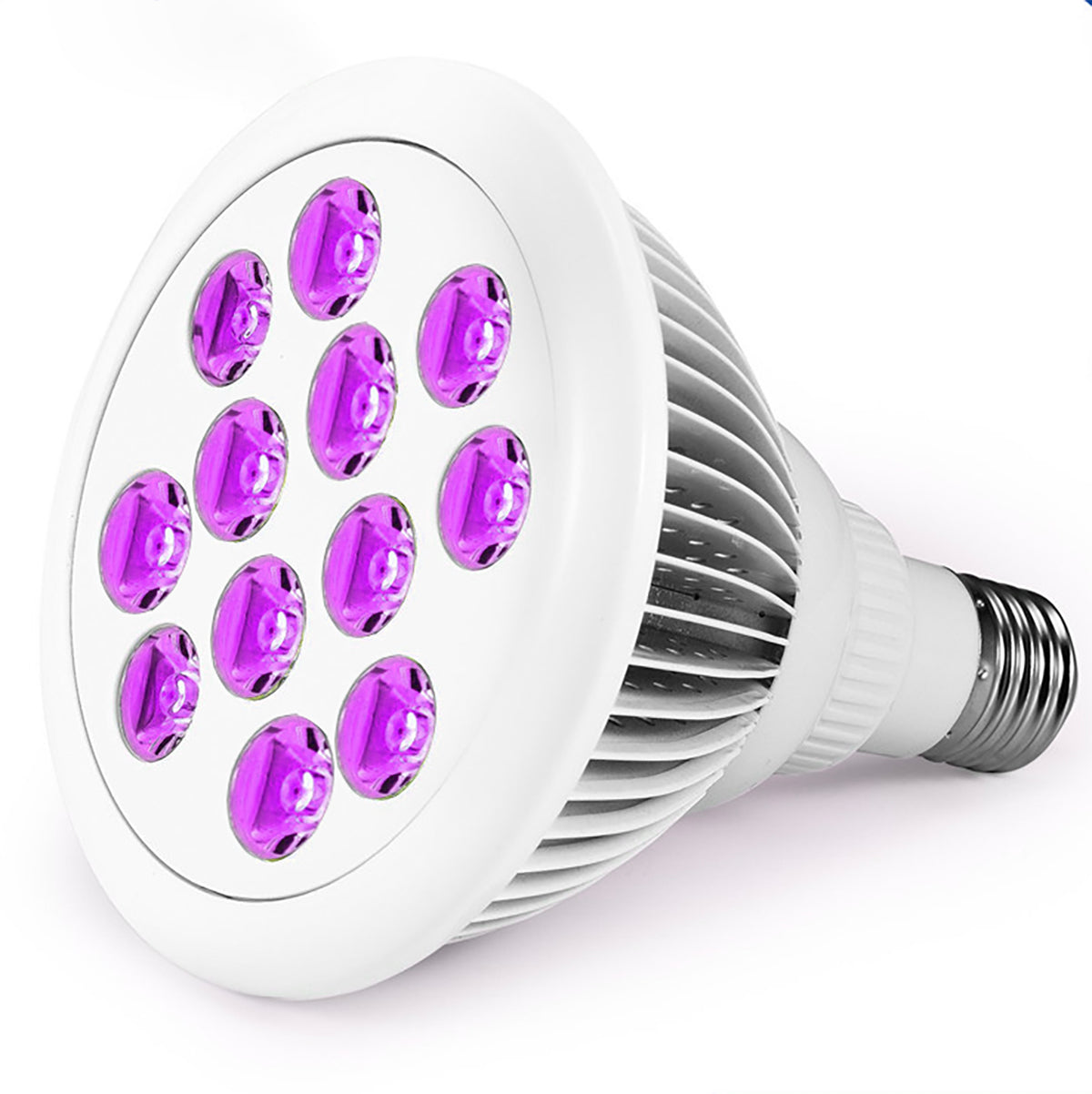
Violet is another one of the more cooling colors. It has a soothing effect. Violet helps with imbalances in the pineal and pituitary glands. It also helps soothe the nervous system and mental functions.
The benefits of Violet Light Therapy
Violet color:
Color combinations
Sometimes the best results are seen by combining colors, using their different effects for more holistic healing.
Red and Blue Light – Acne
Alternating red and blue light can be used to clear up severe cases of acne and skin welts. The blue light attacks the bacteria causing acne, while the red light stimulates collagen and elastin to renew the skin.
Red and Amber – Rosacea
If you have burning, itching, acne, rosacea, or broken capillaries, always start with red light.
However, for redness or broken capillaries, you may want to try a combination of red and amber light.
Rosacea, in particular, is suited to this type of treatment. As with other inflammatory conditions, irritated skin can really benefit from the application of red light.
Orange and Blue Light – Glands and Hormones
Alternating Orange and Blue light can help balance the endocrine (chemical messenger) system.
Green – All Conditions
Green is often used prior to the application of other colors for more effective results. The only condition where you’ll want to avoid green (and possibly blue) is rosacea – as this is an inflammatory condition best treated with red light.

